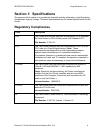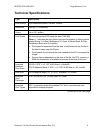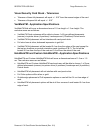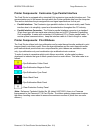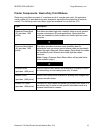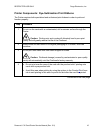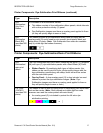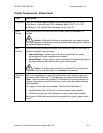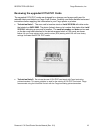
RESTRICTED USE ONLY Fargo Electronics, Inc.
Persona C16 Card Printer Service Manual (Rev. 5.0)
12
Functional Specifications
This Card Printer utilizes two different, yet closely related printing technologies to achieve its
remarkable direct-to-card print quality for dye-sublimation and resin thermal transfer. The
Card Printer will print from any IBM-PC® or compatible running Windows® 95/98/Me,
Windows NT 4.0, Windows 2000 or Windows XP.
The following describes how each of these technologies works:
Function Description
Dye-
Sublimation
Dye-Sublimation is the print method the C16 uses to produce smooth,
continuous-tone images that look truly photographic. (Note: This process
uses a dye-based ribbon roll that is partitioned by a number of consecutive
color panels.)
• The panels are grouped in a repeating series of these three process
colors along the entire length of the print ribbon: yellow, magenta and
cyan or YMC.
• The Printer always prints the yellow panel first, followed by the magenta
panel and the cyan panel. (Note: As the print ribbon passes beneath
the Printhead, hundreds of thermal elements within the Printhead heat
the dyes on the ribbon. When these dyes are heated, they diffuse into
the surface of the card. A separate pass is made for each of the three
color panels on the ribbon.)
By combining the colors of each panel and by varying the heat used to
transfer these colors, it is possible to print up to 16.7 million different
shades of color. (Note: This blends one color smoothly into the next,
producing photo-quality images with absolutely no dot pattern.)
Resin
Thermal
Transfer
Resin Thermal Transfer is the print method the Printer uses to print sharp
black text and crisp bar codes, which can be read by both infrared and
visible-light bar code scanners.
• Used to print ultra-fast, one-color ID cards on the C16. (Note: Like
dye-sublimation, this process uses the same thermal Printhead to
transfer color to a card from a resin-only print ribbon or the Resin Black
(K) Panel of a full color print ribbon.)
• Solid dots of resin-based ink are transferred and fused to the surface of
the card. (Note: This produces durable, saturated printing.)





